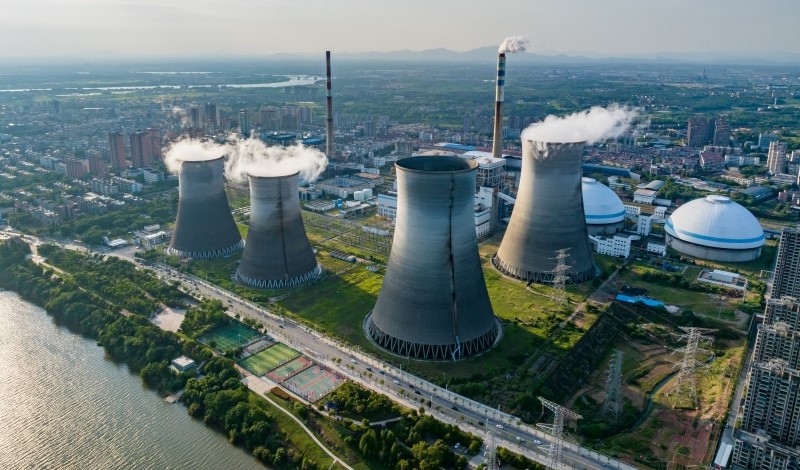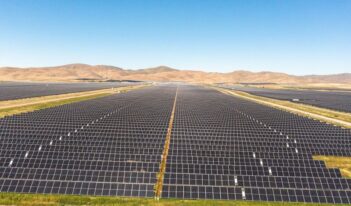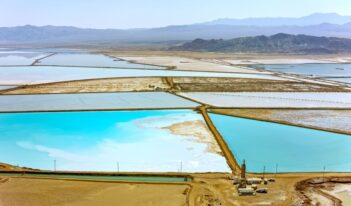
Scholars discuss the role of nuclear power in the U.S.’s clean energy transition.
In September, a Pennsylvania nuclear energy company announced plans to reopen the Three Mile Island nuclear plant—the site of the most significant nuclear accident in U.S. history—to power Microsoft cloud computing and AI data centers. This decision reflects broader pressures to reconcile the increasing energy demands of the U.S. economy with the need to reduce carbon emissions to fight climate change.
Many strategies to mitigate climate change, such as the widespread adoption of electric vehicles, require vast increases in clean energy. Accordingly, support for scaling nuclear energy—which generates electricity with near-zero carbon emissions—has reemerged as a viable policy option. Recent federal policies include nuclear energy in decarbonization efforts. Most prominently, the Inflation Reduction Act of 2022 introduced tax credits and incentives for existing and advanced nuclear reactors.
Despite these developments, domestic nuclear power capacity has declined over the past decade as several plants have gone offline. Scholars attribute these closures to stringent regulations, rising construction costs, and the inability to compete on price with natural gas as technological advances have made drilling far less costly. Some scholars also question whether, under the current regulatory and technological conditions, the climate benefits of nuclear energy generation outweigh the economic costs of a carbon tax that would make it competitive with natural gas.
Supporters of nuclear power advocate expanding U.S. nuclear generation capacity as a crucial element of a climate-neutral energy system. Proponents call for the support of technological innovation, such as small modular reactors, reform of strict regulatory requirements, and implementation of economic incentives or carbon-tax policies. Despite the decrease in the costs of wind and solar energy, nuclear power provides reliable baseload energy that can support the electrical grid through seasonal fluctuations in wind and sunlight. In addition, nuclear energy may accelerate decarbonization by avoiding the land-use conflicts that often delay wind and solar projects. Nuclear power can play a complementary yet vital role in the clean energy transition.
Nuclear power has historically been controversial because of health and environmental concerns arising from incidents such as the 1979 Three Mile Island accident. The U.S. environmental movement partially formed around opposition to nuclear energy in the latter half of the 20th century. Today, environmental groups in the U.S. stand divided over the future of nuclear power in the nation’s clean energy system.
But nuclear power plants have an excellent safety record and—even excluding the downstream impacts of climate change—outperform fossil fuel plants in terms of workplace safety, public health, and environmental impacts. Although storage of nuclear waste in the U.S. poses minimal safety risks, it remains a contentious issue. The lack of a long-term spent nuclear material storage solution undermines public confidence and imposes unnecessary costs on the industry.
In this week’s Saturday Seminar, scholars discuss the role of nuclear power generation in the U.S. clean energy transition.
- In a recent report, Marco Cometto of the International Atomic Energy Agency and his coauthors argue that the reliable supply provided by nuclear power generation is essential to ensure the stability of a clean energy grid. As the share of wind and solar energy grows, Cometto and his team explain, the inherent variability of these sources makes it difficult to maintain a steady supply of electricity to the grid. Cometto and his coauthors suggest nuclear power can reduce the need for costly alternatives such as battery storage and grid interconnections, while the robust design of nuclear power plants makes them particularly suited to withstand extreme weather events without interruption. Cometto and his team conclude nuclear power is a critical part of a reliable low-carbon energy system.
- In an article in the International Journal of Environmental Research and Public Health, Tingzhu Li of East China Normal University and several coauthors underscore the pivotal role of global trade in nuclear power products for reducing greenhouse gas emissions. The Li team observe that international trade drives clean energy solutions, noting that increased global exchange of nuclear energy products correlates with reduced global emissions. To harness nuclear energy’s potential to transform the clean energy industry, Li and her coauthors contend that that government officials should promote the domestic development of nuclear power. The Li team urges officials to actively engage in international trade cooperation to accelerate the adoption of nuclear energy worldwide.
- In a working paper published by the CATO Institute, David Kemp and Peter Van Doren argue that carbon taxes are not a feasible path to cost competitiveness for nuclear power. Carbon taxes, the Kemp and Van Doren contend, should not be set higher than the upper bounds of accepted calculations of the social costs of carbon. Even a carbon tax at this rate, Kemp and Van Doren note, is far below the amount needed to make nuclear power cost competitive with natural gas. Given present costs of capital and construction, as well as current regulatory conditions, Kemp and Van Doren conclude that the cost of constructing nuclear power plants is too high to offer a viable clean energy solution.
- In an article in the Notre Dame Journal of Emerging Technologies, professor Bruce R. Huber urges the implementation of small modular reactors (SMRs) in nuclear power plants. Huber emphasizes that the push for innovative nuclear technology stems from need to overcome the industry’s key vulnerability—the high cost of constructing new nuclear power plants. He argues that SMRs have the potential to reduce manufacturing costs relative to standard nuclear power generation since they can be produced in centralized facilities and offer variable power output. Huber notes, however, that the success of SMRs will largely depend on economic factors such as risk management and commercial viability.
- In a recent report, the U.S. Government Accountability Office (GAO) argues that the Nuclear Regulatory Commission must more accurately account for the risks climate change poses to nuclear power plants. The GAO team notes that nuclear power plants, built an average of 42 years ago, are increasingly vulnerable to the more frequent severe weather events—such as heat waves, hurricanes, and flooding—caused by climate change. To accurately account for these risks, the GAO team argues that the Nuclear Regulatory Commission must take steps to improve its assessment of climate risks including, most importantly, by incorporating climate projections rather than relying on historical data.
- In a recent report, Leigh Anne Lloveras and Adam Stein of the Breakthrough Institute argue that the U.S. Nuclear Regulatory Commission must improve public engagement to address widespread misconceptions about nuclear energy. The historical reliance of the NRC on technical jargon and opaque decision-making processes, Lloveras and Stein explain, has alienated the public and eroded trust. To bridge this gap, the authors suggest prioritizing accessible communication methods—including public meetings, interactive online platforms, and early community involvement. By making regulatory processes more inclusive and transparent, Lloveras and Stein conclude, the NRC can foster trust, enhance its credibility, and ultimately support the advancement of nuclear energy as a key component of a clean energy future.



